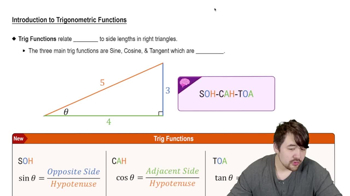Table of contents
- 0. Functions7h 52m
- Introduction to Functions16m
- Piecewise Functions10m
- Properties of Functions9m
- Common Functions1h 8m
- Transformations5m
- Combining Functions27m
- Exponent rules32m
- Exponential Functions28m
- Logarithmic Functions24m
- Properties of Logarithms34m
- Exponential & Logarithmic Equations35m
- Introduction to Trigonometric Functions38m
- Graphs of Trigonometric Functions44m
- Trigonometric Identities47m
- Inverse Trigonometric Functions48m
- 1. Limits and Continuity2h 2m
- 2. Intro to Derivatives1h 33m
- 3. Techniques of Differentiation3h 18m
- 4. Applications of Derivatives2h 38m
- 5. Graphical Applications of Derivatives6h 2m
- 6. Derivatives of Inverse, Exponential, & Logarithmic Functions2h 37m
- 7. Antiderivatives & Indefinite Integrals1h 26m
- 8. Definite Integrals4h 44m
- 9. Graphical Applications of Integrals2h 27m
- 10. Physics Applications of Integrals 2h 22m
1. Limits and Continuity
Finding Limits Algebraically
Problem 21c
Textbook Question
Finding Limits
In Exercises 9–24, find the limit or explain why it does not exist.
lim x →π sin (x/2 + sin x)
 Verified step by step guidance
Verified step by step guidance1
Step 1: Understand the problem. We need to find the limit of the function sin(x/2 + sin(x)) as x approaches π.
Step 2: Substitute x = π into the expression inside the sine function. This gives us π/2 + sin(π). Since sin(π) = 0, the expression simplifies to π/2.
Step 3: Evaluate the sine function at π/2. We know that sin(π/2) = 1.
Step 4: Since the function sin(x/2 + sin(x)) is continuous around x = π, the limit as x approaches π is simply the value of the function at x = π.
Step 5: Conclude that the limit of sin(x/2 + sin(x)) as x approaches π is 1, based on the continuity and substitution.
 Verified video answer for a similar problem:
Verified video answer for a similar problem:This video solution was recommended by our tutors as helpful for the problem above
Video duration:
1mPlay a video:
Was this helpful?
Key Concepts
Here are the essential concepts you must grasp in order to answer the question correctly.
Limits
A limit is a fundamental concept in calculus that describes the behavior of a function as its input approaches a certain value. It helps in understanding how functions behave near specific points, which is crucial for defining derivatives and integrals. Limits can exist or not exist, and determining their existence often involves evaluating the function at points close to the limit.
Recommended video:

One-Sided Limits
Continuity
Continuity refers to a property of functions where they do not have any abrupt changes, jumps, or holes at a given point. A function is continuous at a point if the limit as the input approaches that point equals the function's value at that point. Understanding continuity is essential for evaluating limits, as discontinuities can lead to limits that do not exist.
Recommended video:

Intro to Continuity
Trigonometric Functions
Trigonometric functions, such as sine and cosine, are periodic functions that relate angles to ratios of sides in right triangles. In the context of limits, these functions can exhibit specific behaviors as their arguments approach certain values, which can affect the limit's existence. Familiarity with the properties and values of trigonometric functions is crucial for evaluating limits involving them.
Recommended video:

Introduction to Trigonometric Functions

 5:21m
5:21mWatch next
Master Finding Limits by Direct Substitution with a bite sized video explanation from Callie
Start learningRelated Videos
Related Practice







